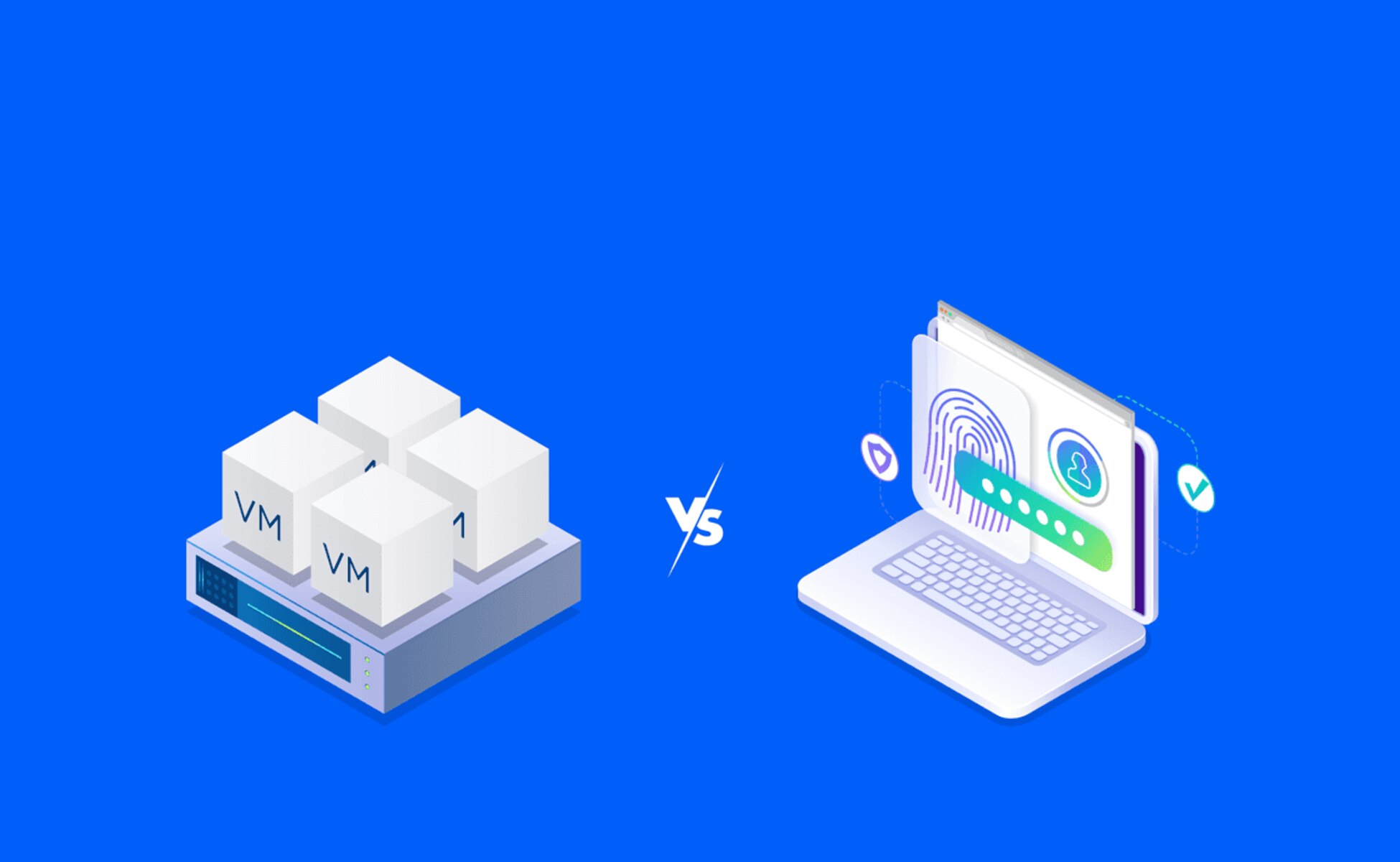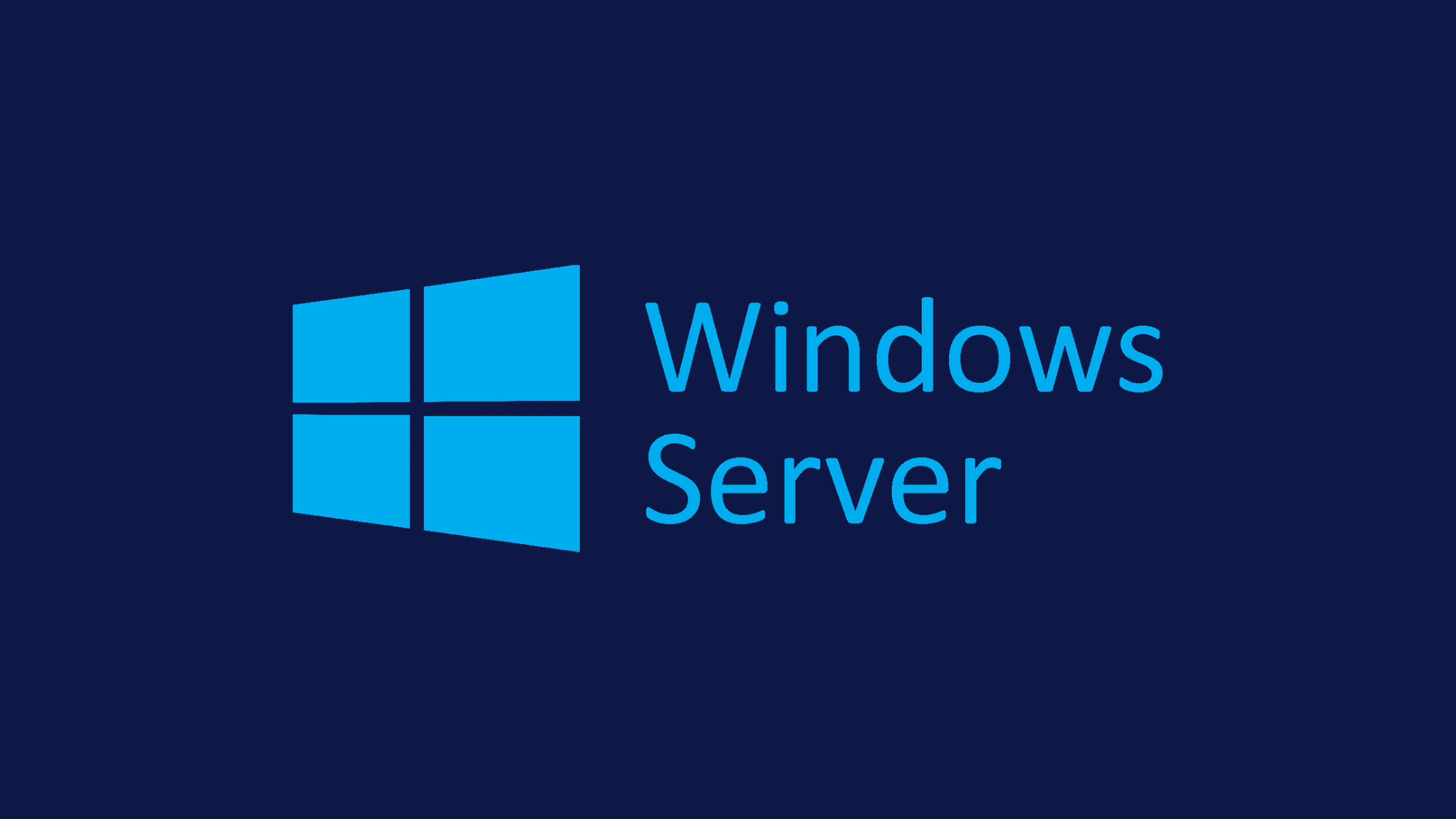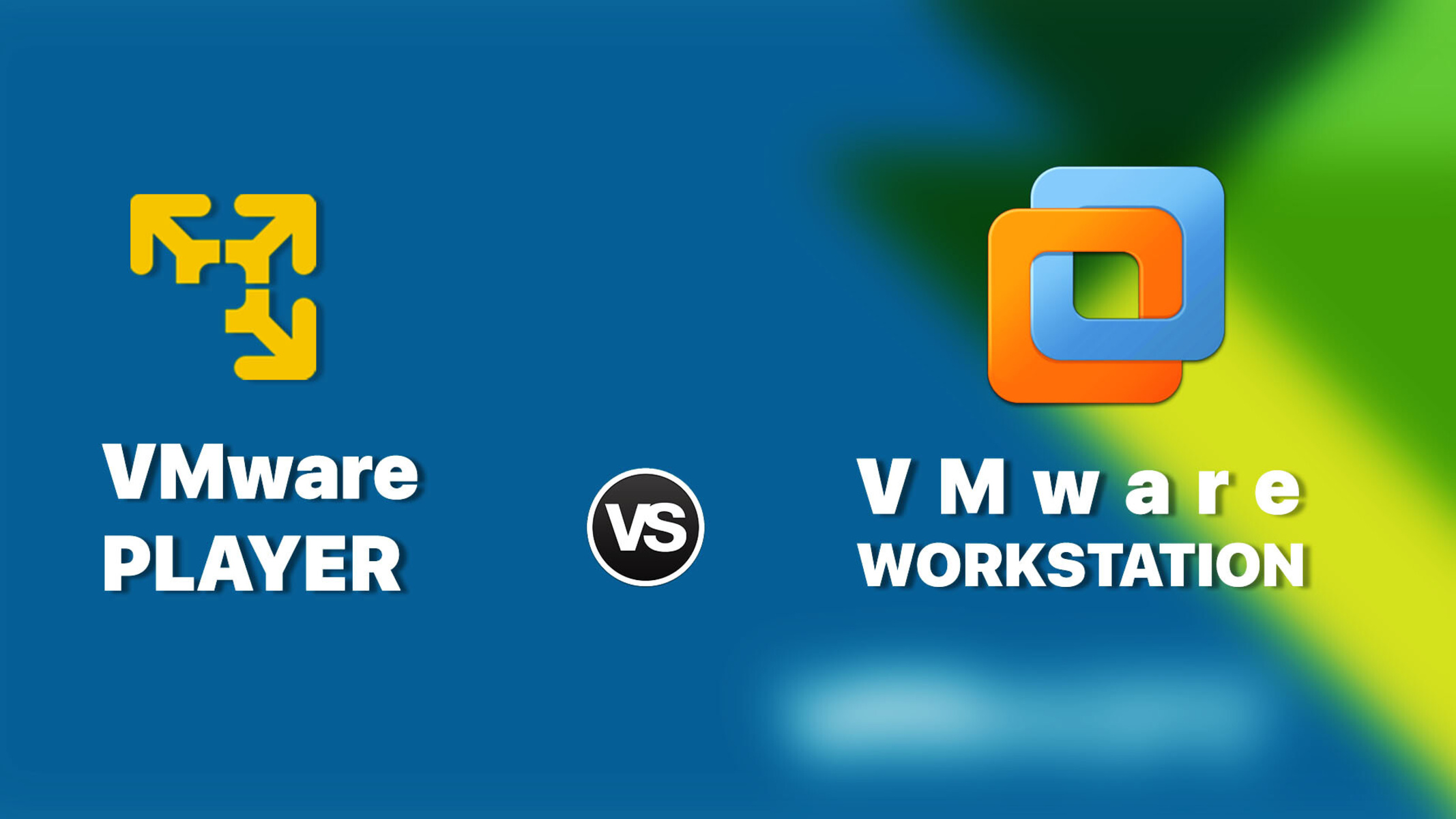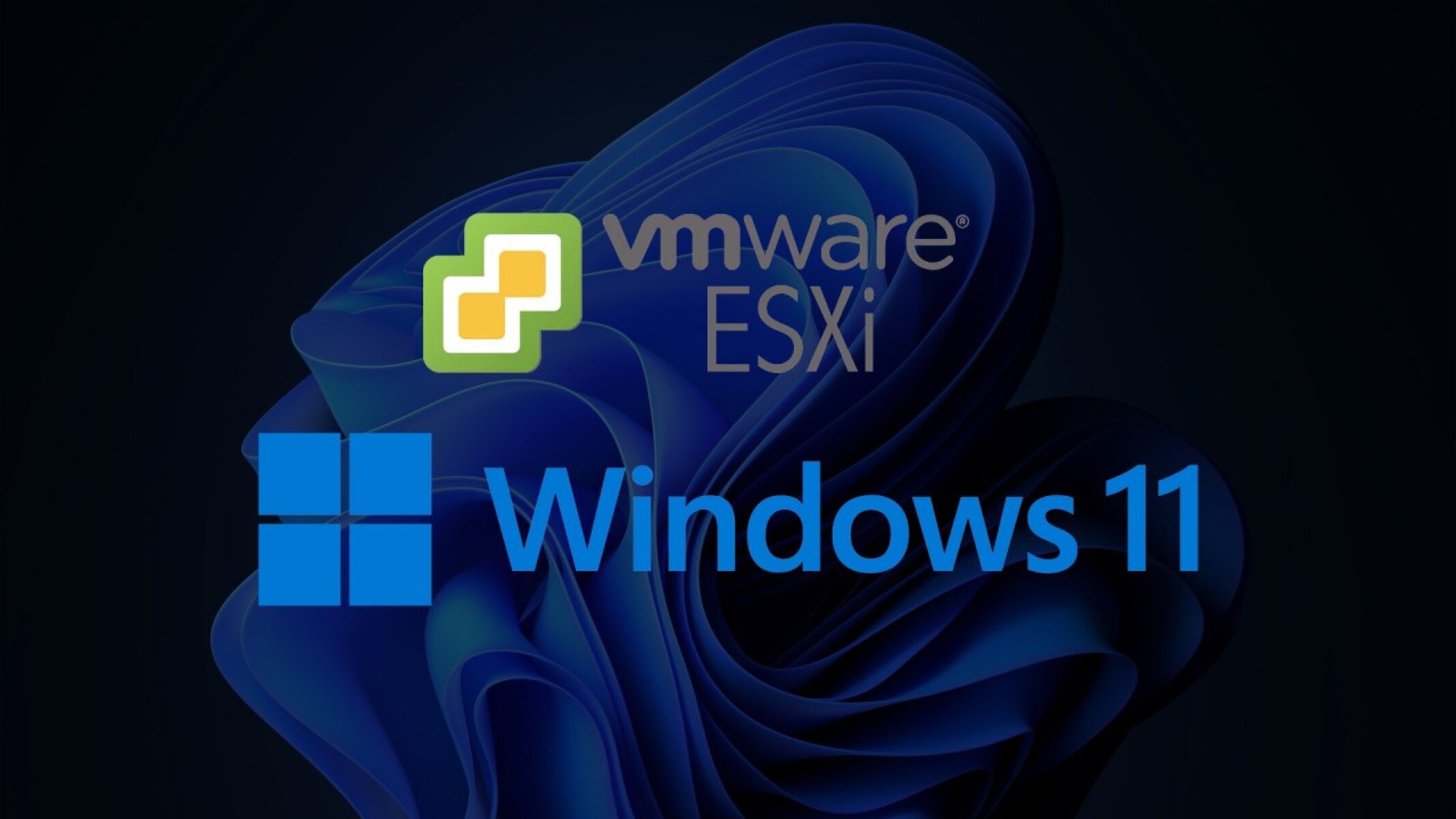Introduction
Remotely accessing VMware Workstation allows you to manage and control virtual machines from a different location, giving you the flexibility and convenience to work from anywhere. Whether you are a system administrator, a software developer, or a technology enthusiast, the ability to access VMware Workstation remotely can greatly enhance your productivity and efficiency.
With VMware Workstation, you can create and run virtual machines on your local computer, simulating different operating systems and testing applications in isolated environments. By enabling remote access, you can connect to the virtual machines running on your VMware Workstation host machine from a remote computer, allowing you to perform tasks, solve issues, and manage your virtual machines without physically being in front of the host machine.
This article will guide you through the process of remotely accessing VMware Workstation, providing step-by-step instructions and highlighting important considerations along the way. By following these instructions, you will be able to set up a remote connection to your VMware Workstation host machine and access the virtual machines within it.
Before we dive into the details, it is important to note that remote access to VMware Workstation requires certain prerequisites, including a stable network connection and proper configuration of network and firewall settings. It is also advisable to have administrative access to both the host and remote computers to ensure a smooth setup process.
Now, let’s get started with the installation of VMware Workstation on your host machine and explore the steps to enable remote access.
Prerequisites
Before you can remotely access VMware Workstation, there are a few prerequisites that you need to fulfill. By ensuring that you have the following prerequisites in place, you can avoid any potential issues during the setup process:
- VMware Workstation: Make sure that you have VMware Workstation installed on your host machine. You can download and install the latest version of VMware Workstation from the official VMware website.
- Stable Network Connection: Ensure that you have a reliable and stable network connection on both the host and remote computers. Remote access relies on network connectivity, so a strong and uninterrupted connection is crucial for a smooth remote access experience.
- Administrative Access: To successfully configure and enable remote access, you will need administrative access to both the host and remote computers. Administrative privileges allow you to make the necessary changes and settings required for remote access.
- Operating System Compatibility: Check the compatibility of your operating system with the VMware Workstation version you have installed. VMware provides a list of compatible operating systems on their website, so make sure that your operating system is supported.
- Firewall Configuration: Take into consideration any firewalls or antivirus software that may be running on both the host and remote computers. Configuring firewall settings is essential to allow incoming and outgoing connections for remote access.
By ensuring that you have VMware Workstation installed, a stable network connection, administrative access, a compatible operating system, and the necessary firewall configurations, you will be well-prepared to proceed with the setup of remote access to VMware Workstation.
Now that we have covered the prerequisites, let’s move on to the next section, which guides you through the installation process of VMware Workstation.
Step 1: Install VMware Workstation
The first step towards remotely accessing VMware Workstation is to ensure that it is installed on your host machine. Follow these steps to install VMware Workstation:
- Download: Visit the official VMware website and download the latest version of VMware Workstation that is compatible with your operating system.
- Run the Installer: Once the download is complete, locate the installer file and run it. Follow the on-screen instructions to proceed with the installation process.
- Accept the License Agreement: During the installation, you will be prompted to accept the VMware Workstation license agreement. Read through the agreement and accept it to continue with the installation.
- Select Installation Type: Choose the installation type that suits your requirements. You can opt for a typical installation, which installs all the necessary components, or customize the installation to select specific features.
- Specify Installation Location: Select the destination folder where you want to install VMware Workstation. You can either choose the default location or specify a different path.
- Choose User Experience Settings: In this step, you can customize the user experience settings for VMware Workstation. You can choose whether to enable or disable certain features, such as using a shared VM for new virtual machines or checking for software updates.
- Complete the Installation: Once you have configured the installation settings, click on the “Install” button to start the installation process. Wait for the installation to complete.
Once the installation is complete, you now have VMware Workstation installed on your host machine. Before moving on to the next steps, make sure to restart your computer to ensure that any changes are applied correctly.
Now that you have installed VMware Workstation, let’s proceed to the next section, where we will guide you through the process of enabling remote access.
Step 2: Enable Remote Access
After installing VMware Workstation, the next crucial step is to enable remote access so that you can connect to your virtual machines from a remote computer. Follow these steps to enable remote access:
- Launch VMware Workstation: Open VMware Workstation on your host machine by locating it in your installed applications or searching for it in the start menu.
- Go to Preferences: Once VMware Workstation is open, click on the “Edit” menu option and select “Preferences”. This will open the Preferences window where you can configure various settings.
- Select the “Remote Access” Tab: In the Preferences window, navigate to the “Remote Access” tab. This tab is where you can enable and configure remote access settings.
- Enable Remote Connections: In the Remote Access tab, check the box that says “Enable the server to accept connections from Remote Workstation users”. This allows remote connections to your VMware Workstation host machine.
- Configure Authentication: In the Remote Access tab, you can configure the authentication method for remote access. You can choose to use a shared password or individual user passwords. Select the appropriate option based on your preferences.
- Set User Permissions: In the Remote Access tab, you can also set user permissions. Specify whether you want to allow full control or view-only access for remote users. Customize the permissions according to your needs.
- Save Changes: Once you have made the necessary changes and configurations, click on the “OK” button to save the settings and enable remote access.
With remote access enabled, you have successfully configured your VMware Workstation host machine to accept remote connections. Now, you are ready to establish a remote connection and access your virtual machines from a remote computer.
Now that remote access is enabled, let’s move on to the next section, where we will guide you through the process of configuring network and firewall settings to ensure a seamless remote access experience.
Step 3: Configure Network and Firewall Settings
Configuring the network and firewall settings is essential to establish a successful remote connection to your VMware Workstation host machine. Follow these steps to configure the network and firewall settings:
- Network Configuration: Ensure that both your host machine and the remote computer are connected to the same network. This can be a local area network (LAN) or a virtual private network (VPN).
- Firewall Rules: Check the firewall settings on both the host machine and the remote computer. Make sure that the necessary ports are open and allow incoming and outgoing connections for VMware Workstation. If you have a third-party firewall or antivirus software, adjust the settings accordingly.
- Port Forwarding: If you are connecting to your host machine from a remote network, you may need to set up port forwarding on your router. This ensures that incoming remote access requests are properly forwarded to your host machine.
- Static IP Address: For a more stable remote connection, consider assigning a static IP address to your host machine and the remote computer. This prevents any IP address changes that may disrupt the remote access connection.
- Network Accessible: Ensure that your host machine is accessible from the remote computer by pinging its IP address or hostname. This verifies that the network connection between the two devices is established.
By properly configuring the network and firewall settings, you will eliminate any potential barriers that may hinder remote access to your VMware Workstation host machine. These settings allow for a secure and efficient remote connection.
Now that you have configured the network and firewall settings, let’s move on to the next section, where we will guide you through the process of creating and configuring a virtual machine for remote access.
Step 4: Create and Configure a Virtual Machine
Creating and configuring a virtual machine is an important step in remotely accessing VMware Workstation. Follow these steps to create and configure a virtual machine:
- Create a New Virtual Machine: Open VMware Workstation on your host machine and click on the “Create a New Virtual Machine” option. Follow the wizard to set up the basic configuration of the virtual machine, such as the guest operating system, disk size, and memory allocation.
- Customize Virtual Machine Settings: Once the virtual machine is created, you can customize its settings to suit your requirements. Configure options such as CPU allocation, network settings, graphics, and shared folders.
- Install Guest Operating System: Install the guest operating system on the virtual machine. This can be done by inserting the installation media or selecting an ISO file. Follow the installation instructions specific to the guest operating system.
- Install VMware Tools: After the guest operating system is installed, install VMware Tools on the virtual machine. VMware Tools enhances the performance and functionality of the virtual machine. It provides improved graphics, mouse integration, and file sharing capabilities.
- Configure Network Settings: Ensure that the virtual machine has the correct network settings to establish a remote connection. Assign a static IP address within the same network range as your host machine.
- Enable Remote Display: Enable remote display settings for the virtual machine. This allows you to view the virtual machine’s display remotely and control it through the remote connection.
By creating and configuring a virtual machine properly, you will set up the necessary environment to access it remotely. Ensure that the guest operating system, network settings, and remote display options are correctly configured to facilitate seamless remote access.
Now that you have created and configured a virtual machine, let’s proceed to the next section, where we will guide you through the process of accessing the virtual machine remotely.
Step 5: Access the Virtual Machine Remotely
Once you have set up the virtual machine and configured the necessary settings, you can now proceed to access the virtual machine remotely. Follow these steps to access the virtual machine:
- Establish Remote Connection: On your remote computer, launch VMware Workstation or VMware Remote Console, depending on the remote access method you are using. Enter the IP address or hostname of your host machine to establish the remote connection.
- Authenticate the Connection: If you have set up authentication for remote access, enter the required credentials to authenticate the connection. This ensures that only authorized users can access the virtual machine remotely.
- Select the Virtual Machine: Once the remote connection is established, you will see a list of virtual machines available on the host machine. Select the virtual machine you want to access remotely.
- Launch the Virtual Machine: Click on the “Power On” or “Resume” button to launch the selected virtual machine. This will start the virtual machine and allow you to interact with it remotely.
- Control the Virtual Machine: Once the virtual machine is powered on, you can control it remotely as if you were sitting in front of the host machine. Use the mouse, keyboard, and other input devices to interact with the virtual machine.
- End the Remote Session: When you have finished working with the virtual machine, properly shut it down or suspend it. Disconnect from the remote session by closing VMware Workstation or VMware Remote Console. This ensures that the virtual machine is safely closed and any unsaved data is preserved.
By following these steps, you will be able to remotely access and control your virtual machine from a different computer. This allows you to take advantage of the powerful capabilities of VMware Workstation, even when you are not physically present at the host machine.
Now that you have successfully accessed the virtual machine remotely, let’s move on to the next section, where we will provide some troubleshooting tips to help you overcome any issues you may encounter during remote access.
Step 6: Troubleshooting Tips
While remote accessing VMware Workstation is generally a smooth process, you may encounter some challenges along the way. Here are some troubleshooting tips to help you overcome common issues:
- Check Network Connectivity: Ensure that both the host machine and the remote computer are connected to the same network and have a stable internet connection. Verify network settings and re-establish the connection if necessary.
- Verify Firewall Settings: Double-check the firewall settings on both the host machine and the remote computer. Make sure that the necessary ports are open and allow incoming and outgoing connections for VMware Workstation.
- Restart VMware Services: If you are experiencing issues with remote access, try restarting the VMware services on the host machine. This can resolve any service-related problems that may be affecting remote connections.
- Update VMware Workstation: Ensure that you are using the latest version of VMware Workstation. Updates often contain bug fixes and improvements that can address remote access issues. Update VMware Workstation to the latest version if needed.
- Disable Antivirus Software: If you have antivirus software running on either the host machine or the remote computer, temporarily disable it and attempt to establish the remote connection again. Antivirus software can sometimes interfere with remote access.
- Check User Permissions: Verify that the user account being used for remote access has sufficient permissions and rights to access the virtual machine. Ensure that appropriate user permissions are set in the VMware Workstation preferences.
- Test with Different Remote Connection Methods: If you are experiencing issues with one remote connection method, try using an alternative method. For example, if you are using VMware Workstation, consider trying VMware Remote Console or vice versa to see if the issue persists.
By following these troubleshooting tips, you can identify and resolve common issues that may arise during remote access to VMware Workstation. However, if you encounter more complex or specific issues, it may be advisable to consult the VMware Workstation documentation or seek assistance from their support team.
Now that we have covered troubleshooting tips, you are now equipped with the knowledge to resolve any issues you may encounter during your remote access journey.
Conclusion
Remotely accessing VMware Workstation opens up a world of possibilities for managing and controlling virtual machines from anywhere, providing ultimate flexibility and convenience. Throughout this guide, we have covered the essential steps to enable remote access to VMware Workstation:
- Installing VMware Workstation to set up the foundation for remote access.
- Enabling remote access in the VMware Workstation preferences, allowing connections from remote computers.
- Configuring network and firewall settings to ensure a seamless remote connection.
- Creating and configuring virtual machines to set up the virtual environment for remote access.
- Accessing the virtual machines remotely, controlling them as if you were physically present.
- Addressing common issues and troubleshooting tips to overcome any challenges that may arise.
By following these steps, you can harness the power of VMware Workstation remotely, enhancing your productivity and enabling efficient management of virtual machines from any location.
Remember to ensure that you have fulfilled the prerequisites, such as having VMware Workstation installed, a stable network connection, administrative access, and proper firewall configuration. These factors greatly contribute to an optimal remote access experience.
As you embark on your remote access journey, always stay up-to-date with the latest updates and best practices from VMware. Regularly check for software updates and maintain good security practices to keep your remote access environment secure.
With the ability to remotely access VMware Workstation, you can work on your virtual machines without being restricted by physical location, providing you with the convenience and flexibility to stay productive wherever you are.
Now that you have the knowledge and steps in hand, enjoy the benefits and possibilities of remotely accessing VMware Workstation!

























